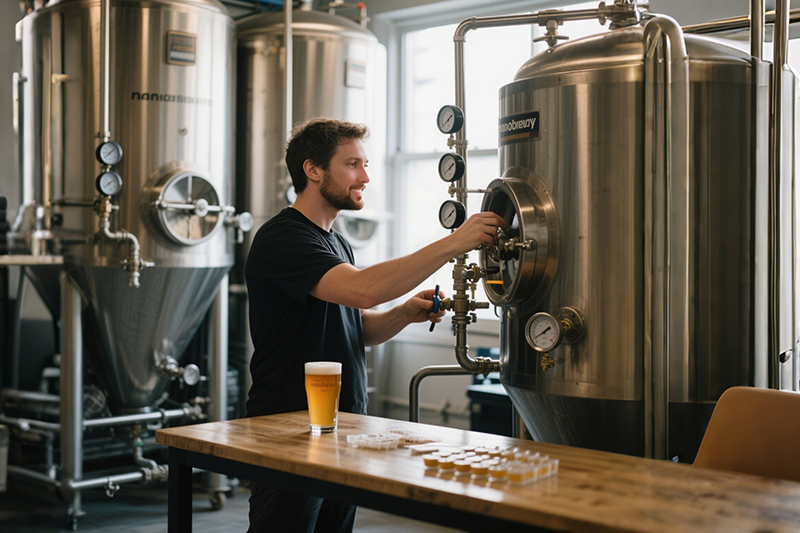As craft beer becomes popular worldwide, “nano breweries” are becoming a hot topic for more and more beer lovers and entrepreneurs. Unlike large industrial breweries, nano breweries are key to the craft beer market with their small batches, personalization, and flexible operations.
What is a nano brewery?
“Nano brewery” refers to a small brewery with an annual output of 100-500 barrels, usually operated by 1-3 people, and mainly sold to the local market. It is between home brewing and commercial microbreweries, which can not only ensure the possibility of commercial operation but also maintain the quality and personality of hand-made brewing.
Advantages of nano brewery:
- Low investment threshold:Compared with large breweries, nano-level equipment investment is controllable, and suitable for individuals or small teams to start.
- Low risk:Small batch brewing is conducive to testing market feedback and reducing backlogs.
- Flexible operation: The recipe and taste can be adjusted quickly to respond to market changes.
- Easy to manage:less manpower is required, and it is suitable for family-style, husband-and-wife stores and other models.
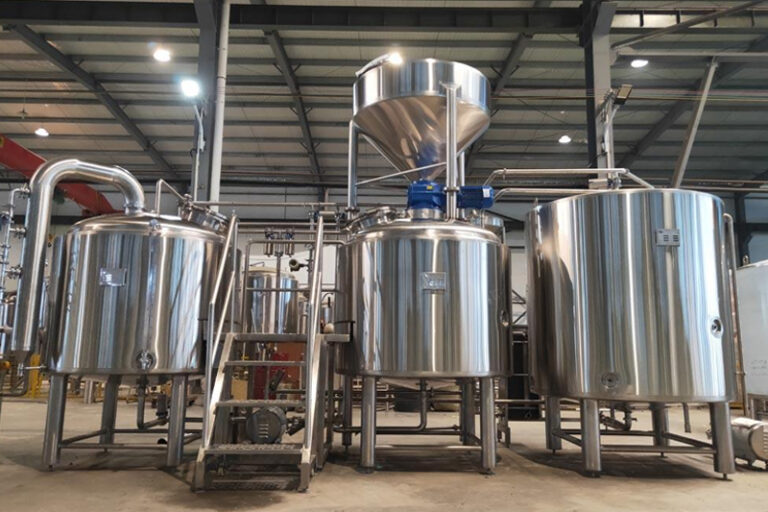
Nano brewery system Composition
Malt Mill
The first step in brewing beer is to crush the malt. Nano Brewery usually uses a double-roller or triple-roller mill, which can crush the malt evenly without damaging the husk, which is conducive to filtering out clear wort during the subsequent mash process. Choosing equipment with adjustable gaps can flexibly adapt to different types of malt.
Mash Tun
The mash tun is a device that mixes crushed malt with hot water and activates enzymes through temperature-controlled heating to convert starch into sugar. For nano breweries, the mash tun is generally a small stainless steel container with a stirring device and temperature sensor, and the capacity range is usually between 100L and 500L. Some systems combine the mash tun with the boiling pot to save cost and space.
Lauter Tun
After mash, the wort needs to be filtered out of the malt residue, which is done in the lauter tun. The lauter tun is equipped with a filter plate or a false bottom structure to ensure smooth separation of the mash liquid and retain clear wort. Some nano brewery system will design the mash pot and lauter tun as one to improve space utilization.
Kettle & Whirlpool
After the wort is filtered, it is transported to the kettle for high-temperature boiling, and hops are added to give it aroma and bitterness. After boiling, it enters the whirlpool tank, where centrifugal force is used to separate sediments and impurities. Modern nano equipment often uses a “mash + filtration + boiling + whirlpool” four-in-one machine, which is very suitable for start-up breweries.
Fermentation Tank
The fermentation tank is where yeast works its magic. After the wort is cooled, it is pumped into the fermentation tank and yeast is added for fermentation, converting it into alcohol and carbon dioxide. Nano breweries often use stainless steel conical bottom tanks, which have good cleanability and sealing properties.
Cooling System
After mash and boiling, the wort needs to be quickly cooled to the fermentation temperature to avoid bacterial infection and protect yeast activity. The commonly used cooling method is a plate heat exchanger, which uses cold water and wort to counter current and cool down quickly.
CIP system
The CIP system is used to clean mash pots, fermentation tanks, pipelines, etc. without dead ends. The standard configuration includes acid tanks, alkali tanks, hot water tanks, and circulation pumps, and some equipment is equipped with spray balls and recovery systems.
Control System
The control system is the key to improving operational efficiency and brewing consistency. For nano-level brewing systems, it is recommended to configure PLC controllers and touch panels (HMI) to achieve automated control of temperature, time, stirring, cooling, and other links.
Filling system
Filling is the last step in the brewing process and directly affects the consumer’s first impression. Nano-level filling systems are mostly semi-automatic structures, including bottle-filling machines, capping machines, and coding equipment, and are compatible with glass bottles or cans.
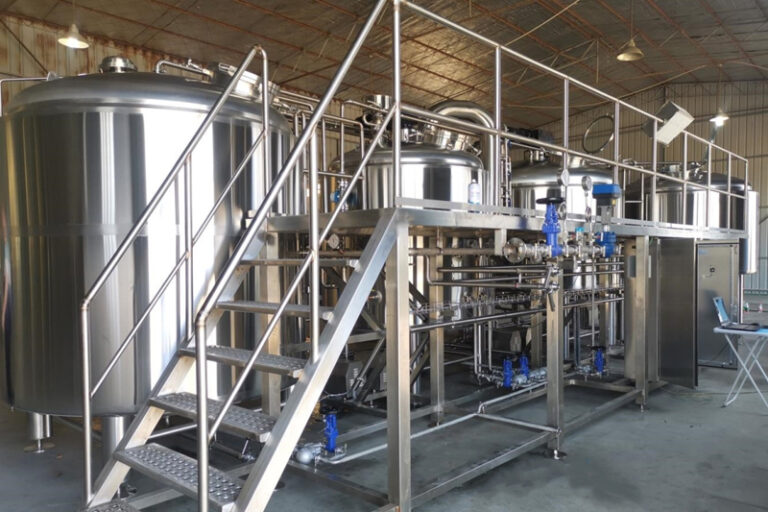
What are the core steps to build a nano brewery?
It is not easy to build a nano brewery from 0. It is a systematic project that requires taking into account market positioning, technical capabilities, and operational practices.
Identify target customers
- Local craft beer lovers: pursue flavor, are willing to pay for good beer, and focus on social experience;
- Young catering groups: love freshness and personality, suitable for pairing with food;
- Cultural and tourism consumer groups: short-distance tourists, interested in “local characteristics” and “cultural stories”;
- Office white-collar workers / new middle class: drink after getting off work, give gifts during festivals, and pay attention to quality;
- Family gatherings/barbecue scenes: pay more attention to the cost-effectiveness of large barrels and the taste and drinkability.
Clearly define product style positioning
What type of beer do you plan to make? Do you pursue the ultimate flavor or go for the popular route?
- Classic mainstream (IPA, lager, wheat, etc.):easy to use, wide audience, low risk;
- Special flavor (sour beer, barrel aging, blended beer, etc.):suitable for building brand personality and forming word of mouth;
- Local culture (using local fruits, tea, Chinese medicinal materials, etc.):highlighting “regional IP” and more communication power.
Site selection and spatial layout planning
Site selection is a key factor in determining whether the approval can be successfully passed and ensuring a smooth brewing process. Nano breweries do not require a high area, usually 30-100 square meters can be started. However, the following conditions must be met: good ventilation, water supply, and drainage, sufficient power access, sewage and exhaust capabilities, and the site layout can be reasonably divided into brewing area, fermentation area, packaging area, raw material area, etc.
Shop Core Nano Brewery System
The core equipment of a nanobrewery must take into account flexibility, stability, and scalability. The basic configuration includes mash pots, filter tanks, fermentation tanks, cooling systems, filling equipment, cleaning systems (CIP), etc. Equipment with a capacity range of 100L~500L is recommended, which is suitable for small-batch trial production and rapid iteration in the initial stage.
Build a raw material supply chain and formulate a recipe
The core of high-quality beer lies in the combination of raw materials and recipes. Raw materials include malt, hops, yeast, water, etc. You can choose a domestic guaranteed raw material supplier, or try imported brand malt and hops to create a high-end positioning.
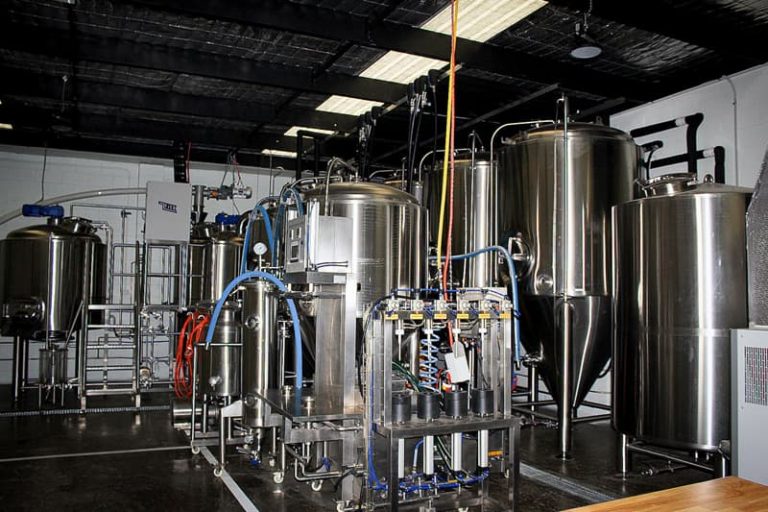
Cost budget and profit
Classification | project | Fee Range (USD) | Remark |
Initial investment | Brewing equipment procurement | $13,900 – $27,800 | Including mash pot, fermentation tank, filling and packaging equipment, etc. |
Site rental and basic decoration | $6,900 – $13,900 | Varies depending on the city location and area | |
License and formalities | $1,400 – $2,800 | Including industrial and commercial, food, environmental protection and other procedures | |
First batch of raw materials received | $2,800 – $6,900 | Malt, hops, yeast and other raw materials | |
Miscellaneous expenses | $2,800 – $4,200 | Including packaging materials, office supplies, marketing materials, etc. | |
Total investment | $27,800 – $55,000 | Can fluctuate up and down according to scale and configuration | |
Operating costs | Monthly operating costs (raw materials + labor + water and electricity) | $3,100 – $5,400/month | Calculated based on medium-sized nanofactories |
Sales Channels and Gross Margin | Self-operated pub sales | $2.8–$4.2/liter, gross profit 50%–70% | High interaction, high premium |
Catering/Bar Channel Sales | $2.1–$3.5/liter, gross profit 40%–60% | Stable shipping channels | |
Retail/e-commerce bottle sales | $1.4–$2.8/liter, gross profit 30%–55% | Invest in packaging design and logistics | |
Profit Strategy | Increase repurchase rate and brand value | — | Membership system, limited edition, offline activities, etc. |
Reduce costs and increase efficiency | — | Optimize supply chain, increase batch size and automation |
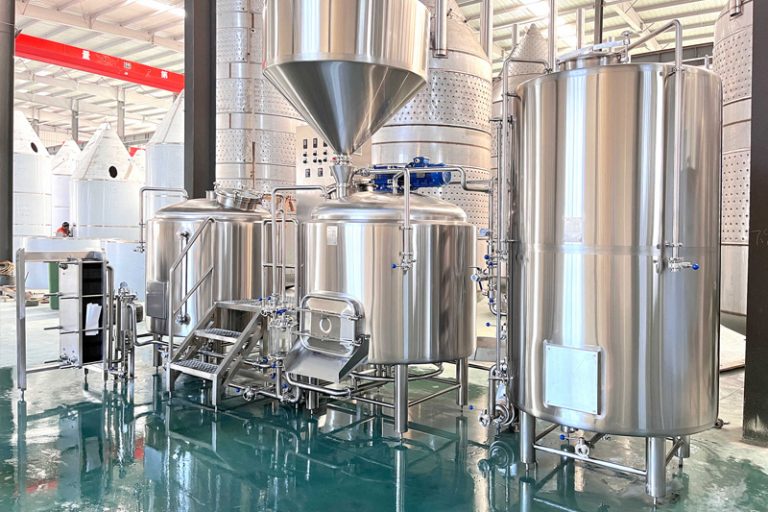
FAQ
Can I run a nano brewery without brewing experience?
Yes. There are a large number of brewing training courses, materials, and recipes suitable for novices on the market, and equipment manufacturers also provide one-stop technical support.
Can a nano brewery make a profit?
As long as you choose the right positioning, control costs, and operate effectively, it is entirely possible to make a profit, especially suitable for the development of sideline businesses and the creation of local characteristic brands.
How to choose an electric or gas system?
Small brewing systems can use electric heating or gas heating. Electric heating is easy to install and suitable for indoor operation; gas is highly efficient and suitable for systems with slightly larger output. Make a choice based on local energy costs and safety conditions.
How to package the beer after brewing?
Common packaging methods include glass bottles, cans, and draft beer barrels. Semi-automatic filling equipment can be used in the early stage, and it can be upgraded to an automatic filling line in the later stage. Manual filling and refrigeration can also be used for sales.

